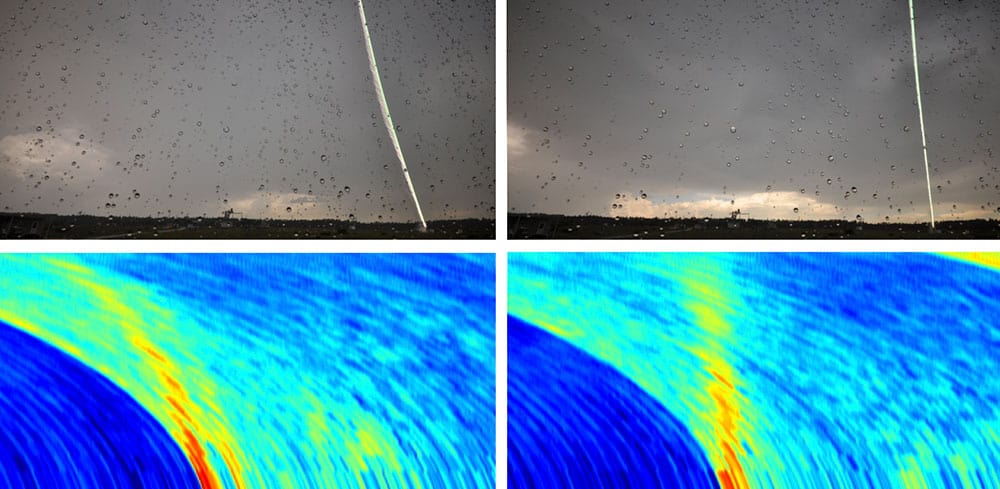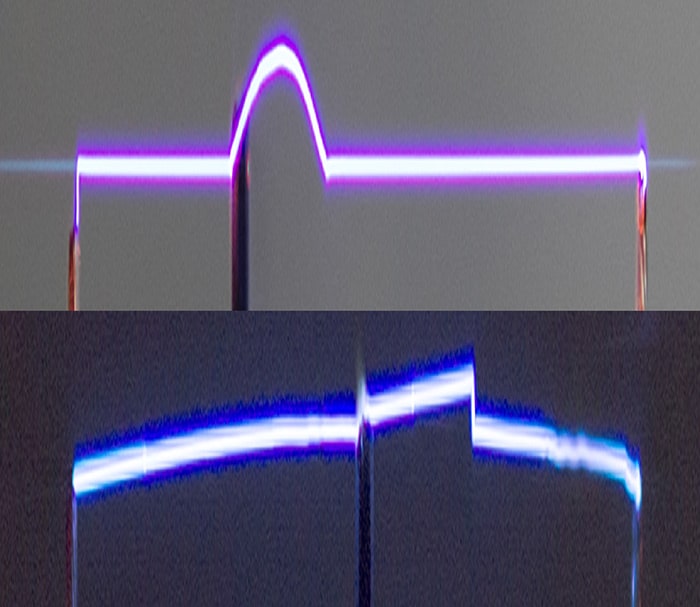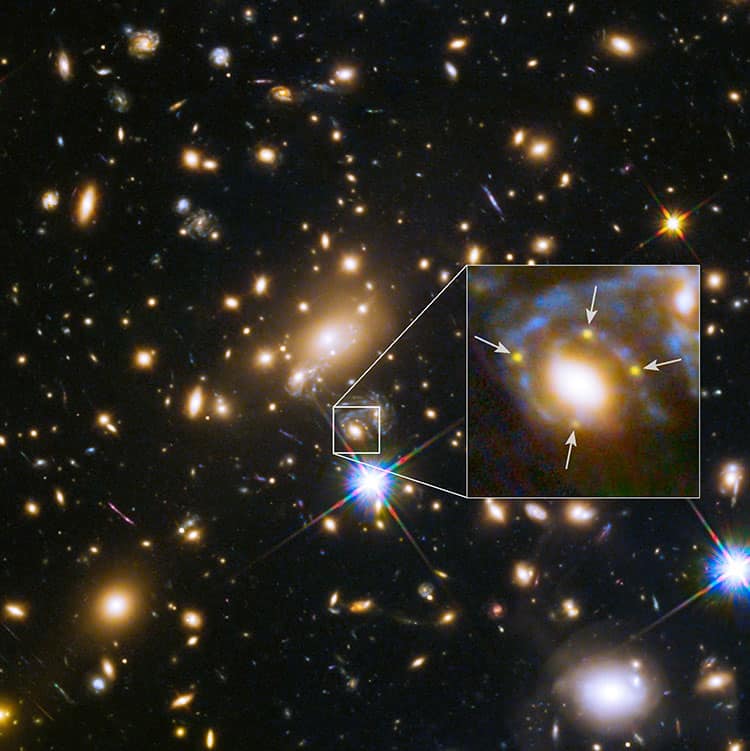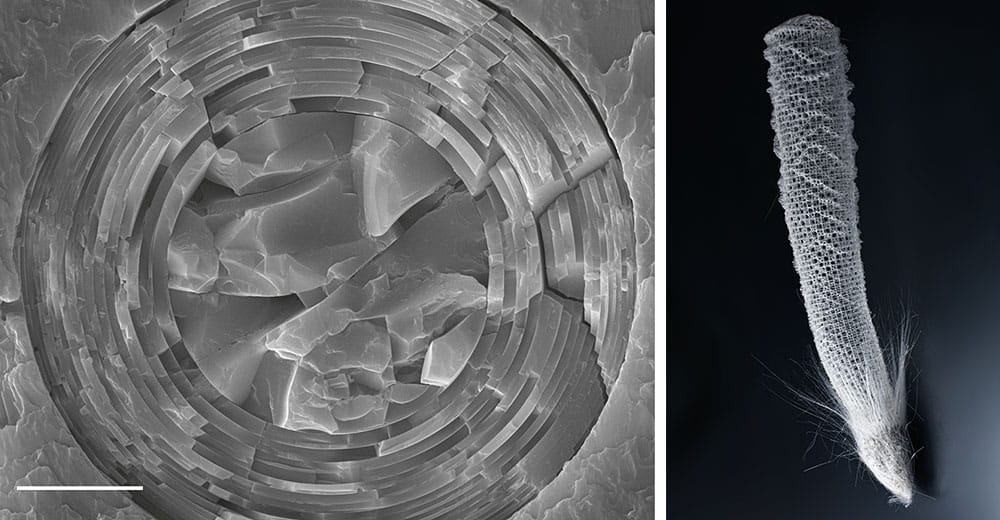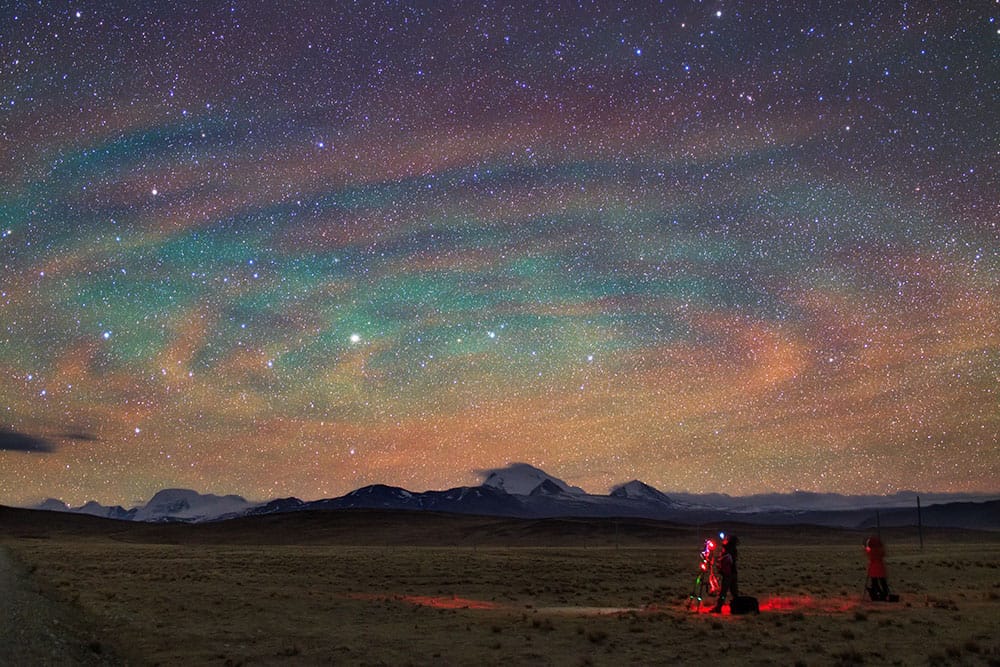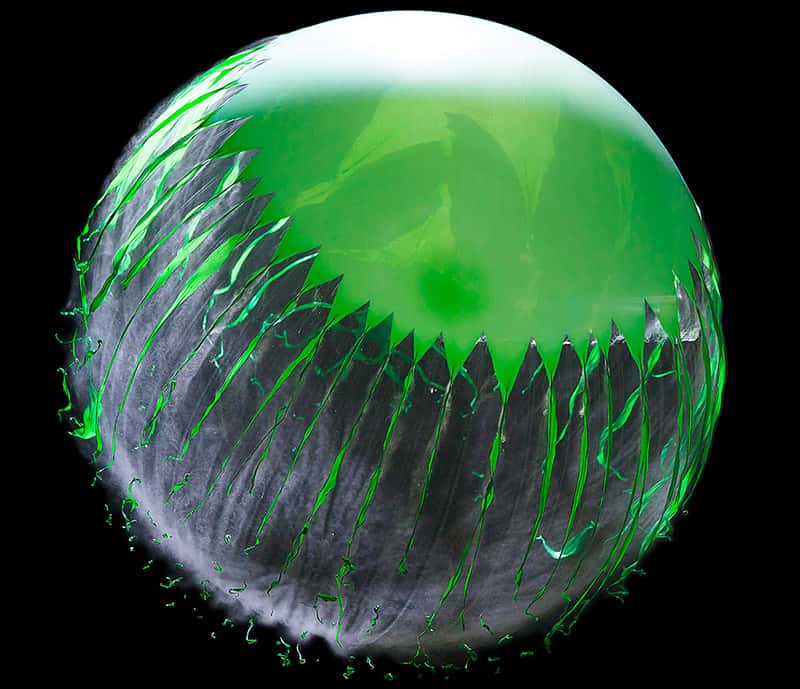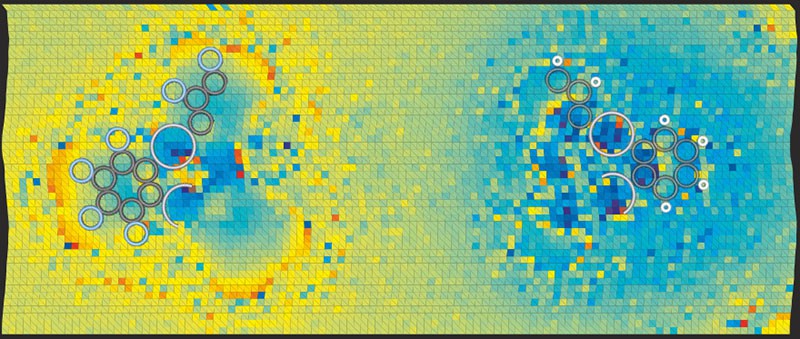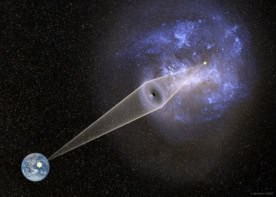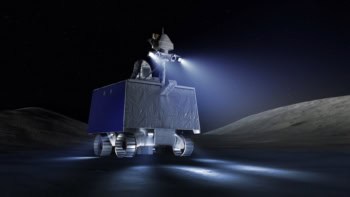Stunning images of the most cutting-edge physics research go a long way to capturing the interest of people, and each year at Physics World we feast our eyes on many of them. Below are 10 of our favourite pictures from this year. From the first-ever images of Pluto to self-assembling nanoflowers to stormy ripples in the night sky, these images are simultaneously beautiful and informative, and we hope you enjoy them

New Horizons uncovers Pluto’s icy secrets
It will come as no surprise that our top image(s) come from NASA’s New Horizons flyby of the dwarf-planet Pluto, which took place on 14 July this year. At its closest approach, the craft was a mere 12,472 km from the planet’s surface – roughly the same distance from New York to Mumbai, India – making it the first-ever space mission to explore a world so far from Earth. Since then, New Horizons has released many stunning, close-up views of the previously unseen dwarf planet, revealing that it is a chilly world where glaciers of frozen nitrogen, methane and carbon dioxide flow around sturdy hills made of water ice. The images revealed that Pluto has mountains several kilometres high, escarpments that run for 600 km and a “bedrock” made of frozen water. Instead of picking just one image, above is a composite film that consists of some of the best views of this distant world. They were made with the telescopic Long Range Reconnaissance Imager, which took pictures every three seconds.
Lasers reveal previously unseen fossil details
You could be forgiven for thinking that the photograph above is of some astronomical wonder such as a nebula, but you would be wrong. Above is a fossil of the skull of a Microraptor, imaged using a new laser-based scanning technique, which could potentially help researchers to get new information from fossil specimens. Developed by palaeontologist Tom Kaye of the Burke Museum in Seattle, together with colleagues also in the US, this inexpensive and non-destructive approach uses commercial-grade lasers to stimulate fluorescence in the fossil. This reveals detail that would not have been observable with traditional visual enhancers such as ultraviolet light, which have a far lower irradiance level. Laser scanning can also help to identify composite fakes – fossils that have been cobbled together from different specimens – by revealing differences in fossil mineralogy.
Clap your eyes on the first ‘images’ of thunder
The cool blue arcs of colour that you see above are among the first images of thunder that have been taken by an international team of researchers. Created by visualizing the sound waves produced by artificially triggered lightning, the novel experiment was carried out by Maher Dayeh of the Southwest Research Institute together with colleagues in Australia and the US. They designed a large array of 16 microphones, lined up 95 m from the launch pad where the lightning would hit. Following each strike, the recordings were processed and converted to give a vertical “acoustic profile” of the lightning bolt. With sound waves from higher up taking longer to reach the receivers, each return-stroke signal has a characteristic curved appearance. The team compared long-exposure optical photographs of triggered lightning events (top) with acoustically imaged profiles of the discharge channel (below), corrected for sound-speed propagation and atmospheric-absorption effects.
Could lasers guide and control the path of lightning?
Following on from imaging thunder, many scientists – mad or otherwise – have sought to control lightning. Thanks to the latest work done by an international team of researchers, electrical discharges could be controlled and guided with lasers, along complex paths and even around obstacles. Our ability to control the exact path such currents take is limited because they are affected by everything from air temperature to the presence of pre-ionized matter. Recent developments in optical physics have brought to light new types of “non-diffracting” laser beams with unusual properties. Both Airy and Bessel beam lasers can “self-heal”, which means that if their intensity peaks are blocked by an obstacle, they can reconstruct themselves on the other side of it. Matteo Clerici, a physicist at INRS University in Canada and Heriot-Watt University in the UK, and colleagues fired different laser beams between two wire electrodes, placed 5 cm apart, between which a high voltage (of 15 kV) was then applied. The images above show how the discharges jump over an obstacle and how the Bessel (top) and Airy (bottom) beams restore themselves, leaving the electric discharge to continue along an almost unaffected trajectory.
Gravitational lensing creates ‘Einstein’s cross’ of distant supernova
A distant galaxy has created four images of a supernova even further away, via gravitational lensing, that have been captured for the first time by an international team of astronomers using the Hubble Space Telescope (HST). The “Einstein cross” pattern forms as light from the distant supernova is lensed as it passes a galaxy that sits within a cluster of galaxies, on its way to Earth. In the image above, the many red galaxies are members of the massive MACS J1149.6+2223 cluster, which creates distorted and highly magnified images of the galaxies behind it. A large galaxy (centre of the box) has split the light from a supernova in a magnified background galaxy into four yellow images (arrows) to form the cross. Patrick Kelly from the University of California, Berkeley, together with colleagues across the globe, already knows that a fifth image will appear in the next decade, providing a “replay” of the supernova, because light can take various paths around and through a gravitational lens and therefore arrive at Earth at different times. This is particularly rare and useful, because astronomy is not normally a predictive science.
Revealing the secret strength of a sea sponge
Found in deep waters in the western Pacific Ocean, the 20–35 cm-long delicate-looking sea sponge (right) Euplectella aspergillum – also known as Venus’s flower basket – has a hidden strength. Its skeleton is firmly attached to the sea floor by thousands of glassy silica “spicules”, which, despite being no thicker than a human hair, have a remarkable load capacity. The spicules are covered in backward-facing barbs that can transmit significant forces along their length to the rest of the sponge’s structure. Each spicule is about 10 cm long and comprises a silica core surrounded by 10–50 concentric silica cylinders, each separated by a thin layer of organic material. Mechanical engineer Haneesh Kesari and colleagues at Brown University and Harvard University in the US have now unravelled the clever design of the sponge by developing a mathematical model of the internal structure of a spicule. A scanning electron micrograph of a spicule (left) shows concentric rings of silica that become thinner towards the outside of the structure (the scale bar is 10 µm long).
Satellite sensor unexpectedly detects waves in upper atmosphere
On 27 April 2014, photographer Jeff Dai was shooting the night sky over the Himalayas, near the border of Tibet, China and India, at an elevation of 4700 m above sea level. After examining his long-exposure images, he was surprised to see large concentric ripples in the glowing air – invisible to the naked eye – that it turns out were formed by a massive thunderstorm that raged over nearby Bangladesh. Coincidentally, the US Suomi National Polar-orbiting Partnership environmental satellite was looking down at the same spot at the same time and, rather unexpectedly, its on-board “Day/Night Band” (DNB) sensor also imaged the ripples, which are disturbances in the upper atmosphere’s nightglow caused by atmospheric “gravity waves”. Such waves drive winds and alter the local temperature and composition in the middle and upper atmosphere. Their observations revealed a complex array of gravity waves in the upper atmosphere that have never before been observed globally at this spatial detail.
Balloon bursts approach the speed of sound
French artist Jacques Honvault is famous for his high-speed photographic images, including the spectacular shot above of a balloon fragmenting just after it is popped. Now, physicists Sébastien Moulinet and Mokhtar Adda-Bedia of the Ecole Normale Supérieure in Paris, have discovered that there is a critical point in the inflation of a balloon beyond which it will create such beautiful flower-like patterns when it bursts. The duo filmed the rupturing process of a latex balloon at 60,000 frames per second using a high-speed camera. In some of their experimental runs, the balloons were filled to a relatively low internal air pressure and then pierced with a scalpel. In these cases, the slit cleanly expanded as the balloon burst. However, when inflated to the pressure at which the balloons would burst spontaneously, the initial slit would suddenly bifurcate to create a “Y” shape. These cracks would further split until the balloon was shredded. The researchers looked at latex balloons of four different thicknesses, inflated to varying degrees. They found that when the stress in the material is above a critical value of about 1.8 MPa, the balloon will fragment. Below it, the rupture is a single slit. The physicists believe that the critical value corresponds to the crack moving at its maximum speed of about 570 m/s – the speed of sound in the latex membranes.
Imaging the polarity of individual chemical bonds
A new imaging method – based on atomic force microscopy (AFM) – allows users to precisely detect and map the charge distribution within molecules has been developed by researchers in Europe. The technique has been used to reveal the difference in bond polarity between two structurally identical but chemically distinct molecules. Jascha Repp of the University of Regensberg in Germany and colleagues were keen to improve images taken in a variation of AFM – dubbed kelvin probe force spectroscopy (KPFS) – that are often distorted. To demonstrate their technique, the researchers looked at the structurally identical molecules F12C18Hg3 (left) and H12C18Hg3 (right) pictured above. They showed for the first time that the C–H bonds in the first compound were polarized with the negative charge on the carbon atom, whereas the C–F bonds in the second were polarized the opposite way.
Organic microflowers bloom bright
The image above may look exactly like a fire-red carnation, but what you are looking at is a digitally coloured artificial microflower, magnified nearly 20,000 times. Developed by researchers at RMIT University in Melbourne, Australia, together with colleagues in India, these artificial organic flowers self-assemble in water, blooming just like an actual flower. The team has developed, for the first time, floral microstructures that form via a self-repeating arrangement in water. The artificial microflowers, which take about three hours to fully develop, are created by mixing two organic components (naphthalenediimide-bearing phosphonic acid and melamine) in water, which is then evaporated. Such floral structures could be used in a variety of fields – from optoelectronics and chemosensors to nanotechnology, biotechnology, biomedicine and organic electronics – thanks to their distinctive surfaces.
